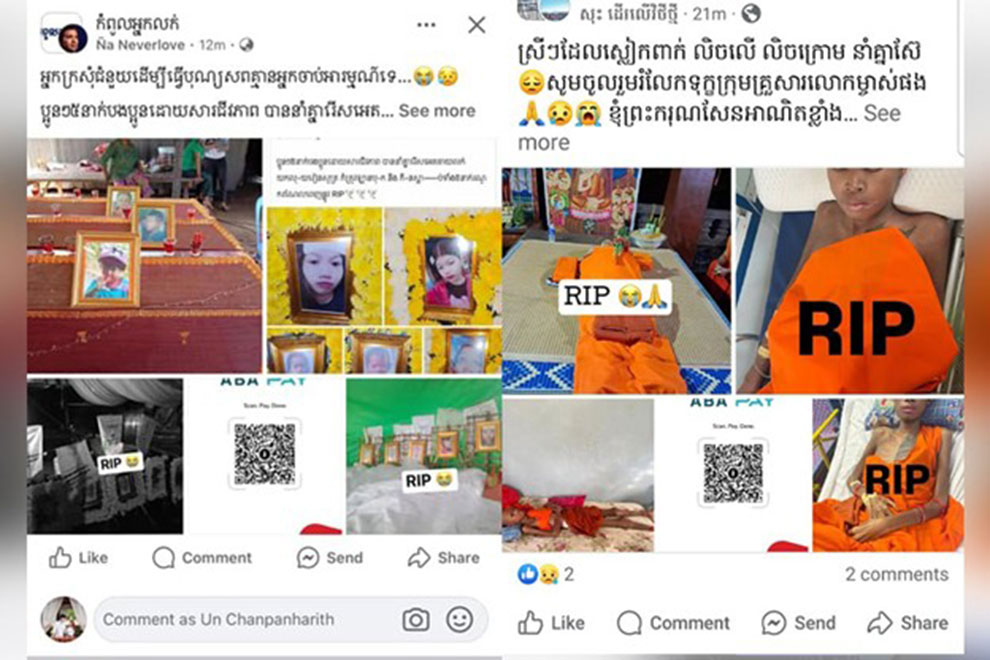
A suspect accused of allowing scammers to use her account in a scam which impersonating an EDC official was arrested on January 23. Anti technology crime department
The authorities have been urged to respond to a recent increase in online scams involving the fraudulent use of QR codes.
Some of the scams involve people using images of deceased or critically ill individuals as a pretext for asking for donations, while a recent case featured a scammer who posed as an employee of Electricité du Cambodge (EDC).
On January 25, the Department of Anti-Technology Crimes sent a suspect to court for impersonating an EDC staff member to access and transfer funds from the bank accounts of two victims. The total amounts stolen were approximately $6,500 and 2 million riel ($500).
The department stated that the suspect, a Cambodian woman residing in Kandal province, “provided her bank account and means for accomplices to carry out their fraudulent activities”.
They added that the fraudsters impersonated EDC officials, contacted their victims and then instructed them to download the EDC app to build trust. They were then directed to install an app called “Tailscale”, allowing remote control of their phones. The victims were tricked into revealing their banking app passwords, believing it was to receive a passcode for the EDC app via bank notifications. This enabled the criminals to transfer funds.
The authorities reminded all account holders not to allow others to use their bank accounts or to withdraw cash from unclear sources, emphasising that such actions are criminal offenses and legal consequences will follow.
Such technology-based scams have surged in recent times, with some victims losing thousands of dollars in these scams.

Screenshots of fake Facebook posts which use images of deceased or unwell strangers to appeal for donations. FB
In December 2024, EDC clarified that it operates only through its official EDC app and does not use any other links, like Tailscale.
One victim in Phnom Penh spoke anonymously with The Post. He explained that he lost over $6,000 from two bank accounts through such scams. Other victims reported similar experiences. The individual in question has filed a complaint with the cyber crime department and is awaiting investigation results.
The victim expressed dissatisfaction with the response from the banks, which claimed they could do nothing as they were merely intermediaries for the transfers. According to the victim, the banks insisted they could only request that the fraudsters return the money, but if they refused, the banks had no recourse.
Although praising one bank for its cooperation and prompt response, the victim said it was a shock to discover that the bank was powerless to do anything.
Social media users have also called for authorities to investigate and apprehend scammers who use photos of deceased or critically ill individuals alongside QR codes to solicit donations. These scams are commonly found in Facebook groups, where they sometimes garner attention and shares from users.
Ngeth Moses, an independent digital security consultant, noted that identifying the scammers can be challenging because they often hide behind fake Facebook accounts or steal accounts from other social media users.
He said that investigations could trace the bank accounts or QR codes used, but such efforts require time, resources and close cooperation between the banks and law enforcement authorities.
He added that compassionate individuals often find it difficult to verify whether the person in the photo truly needs help and whether the fundraising effort is legitimate or a scam.
“Users should seek detailed information about such donation requests to determine whether they are genuine individual or institutional appeals. If there is insufficient information to verify their legitimacy, users should refrain from providing their funds,” he told The Post.












